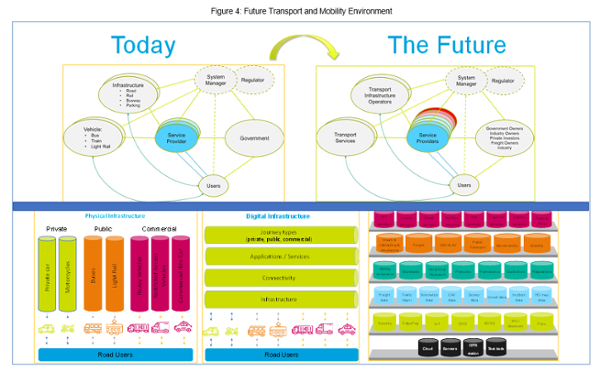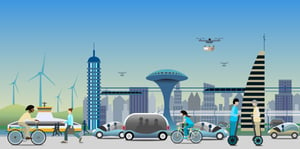What should the future transport and mobility environment look like?
In 2020, ARRB and the Queensland Department of Transport and Main Roads collaborated with iMOVE in a research project to understand the challenges and opportunities, and a common understanding of the future transport environment.
Through engagement with technical experts and thought leaders across government and industry, the research defined a conceptual and logical architecture for the Future Transport & Mobility Environment (FTME), to facilitate common language and understanding across different parties.
The project’s Final Report is now released and can be found here.
An Interim Discussion Paper, iMOVE webinar, and slide deck are also available.
Transport and mobility management involves a combination of people, processes, systems, and technology.
With significant changes occurring in technology and mobility services, there is an opportunity and need to capture the current paradigm and plan for the emerging future transport and mobility environment.
Digitisation and advances in mobile communications have changed our lives significantly.
The current silos in land transport associated with private vehicles, commercial vehicles, and public transport (road and rail) are now beginning to change whereby service delivery is largely independent of the specific transport silo.
A car can be a private vehicle, a service, commercial or freight vehicle and a public transport vehicle all in the same 24 hours. Journeys (or mobility) are enabled by applications and services provided by service providers and supported by layers of digital and physical infrastructures.
In essence, digital infrastructure has been rolled out across the physical infrastructure of the land transport network. The change in thinking from a silo based view to a layer based view of the future transport and mobility eco-system as shown in Figure 1 (below) requires alignment of technology and innovation with the other key elements of a system; policy and legislation, infrastructure and humans.
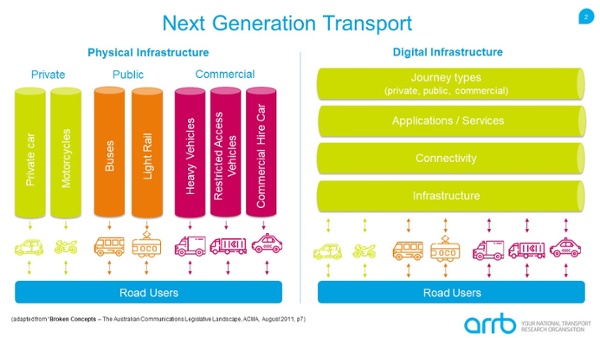
Figure 1: Convergence in networks and service layers
Recent studies by ARRB’s on a future transport and mobility environment developed a listing of the core functional elements in FTME to gain an appreciation of the depth and breadth of what we already have in Australia, depicted in Figure 2.
In this first version of the Australian ‘pantry”, the functional elements have been layered into six layers:
- Services – the range of mobility services available from specific service providers and transport and mobility operators.
- Processing – the integration and transformation of data and logical elements into business specific requirements for actors in the transport and mobility.
- Logical elements – the regulatory, operational and safety frameworks that enable safe and efficient operations of the transport and mobility ecosystem.
- Data – the data required for users, service providers and regulators who operate in the ecosystem.
- Digital infrastructure and connectivity – the infrastructure that provides the connectivity layer between the customers, vehicles, infrastructure and the back offices of the ecosystem.
- Physical infrastructure / roads and devices – the infrastructure and technology that comprise the roads, rail and supporting assets including ITS on which the land transport network is based.
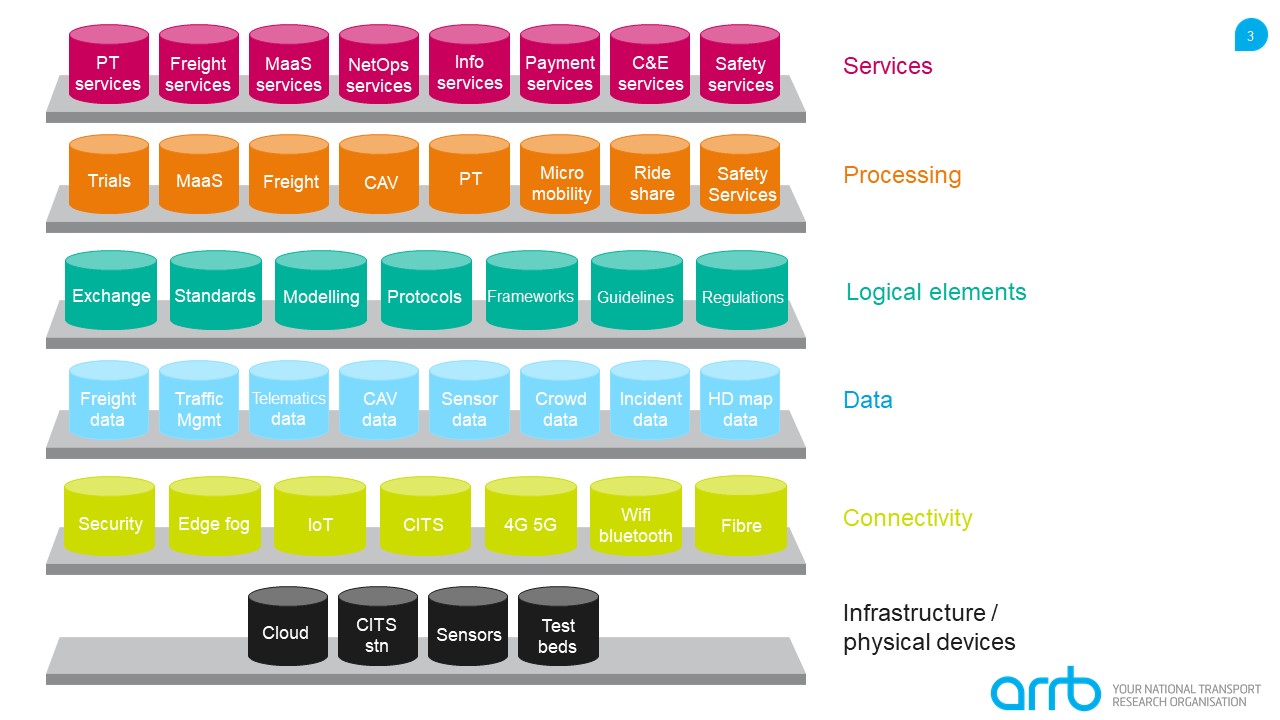
Figure 2: The Australian "pantry" - core functional elements
Future mobility will require integration of different services as shown in Figure 3. Each of the services will critically rely on cloud-connected data for their proper functioning and thereby achieve the outcome of an integrated mobility service for all road users. Such an appreciation by practitioners provides the context from which to address the options and guidance necessary to work with all services and industry to deliver safe and efficient journey outcomes for road users who are cloud-connected.
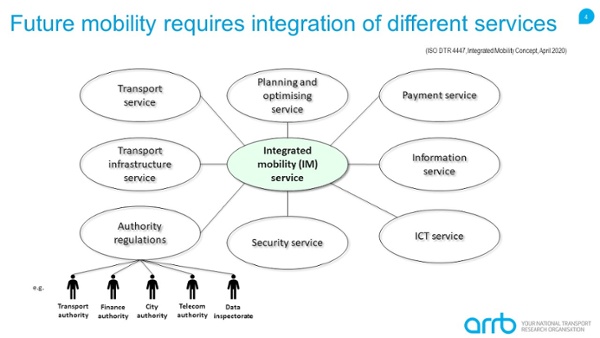
Figure 3: Integrated mobility services
The project undertook an investigation to explore and challenge traditional approaches to transport operations and mobility in the face of new technologies and communications enabling greater integration of systems in the transport and mobility ecosystem.
The findings of this project can be summarised in Figure 4 which shows, (i) the physical and digital infrastructure and (ii) the pantry of functional elements, in the lower half of the figure, and (iii) the roles and responsibilities, in the top half of the figure.
The physical infrastructure of transport and mobility has been complemented by digital infrastructure and better connectivity between people, vehicles, infrastructure, and back offices. The Australian ‘pantry’ of core functional elements continues to expand and mature and these functional elements are utilised by the actors in the future transport and mobility environment in their roles, such as Service Providers, Transport Services, Transport Infrastructure Operators, Customers and Users as well as Governments as Regulators and System Managers.
While the roles and responsibilities today and in the future look similar, the increasingly integrated nature of transport and mobility calls for a fresh definition of roles and responsibilities of actors such as the System Manager and Regulator, which are currently the responsibility of several actors in road and rail networks, commercial and heavy vehicles, public transport and freight.
The development of a clear understanding around the conceptual and functional areas of a future transport and mobility ecosystem also provides the opportunity to disseminate this knowledge to other areas outside of transport, for example, to areas such as aviation, defence, freight, Big Data, safety, research and standards development.
